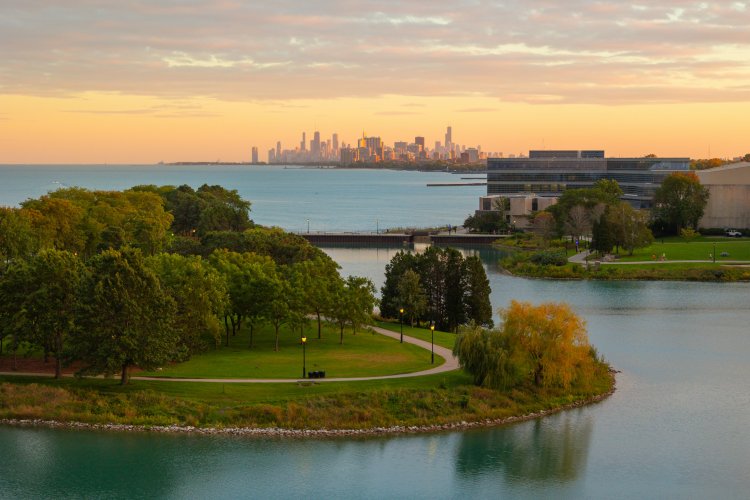
On February 24, Evanston, Illinois’ city council voted to make Evanston the first city in the State to adopt the newly available stretch energy code for new residential and commercial buildings. This is a significant step for Evanston to achieve the emissions reduction goals outlined in its 2018 Climate Action and Resilience Plan.
In 2021, the Climate and Equitable Jobs Act established provisions for the Capital Development Board to create and publish a stretch energy code, offering Illinois jurisdictions a consistent pathway to exceed the efficiency requirements of the Illinois Energy Conservation Code, the state’s base energy code. The first edition of the stretch code became available for municipalities to adopt on January 1 of this year. Once adopted by a municipality, the stretch code replaces the base code as the primary energy efficiency standard for new construction, additions and renovations for commercial and residential projects.
In contrast to the base code, which does not have to meet a certain level of energy efficiency, the Illinois stretch code is required to meet energy efficiency targets that improve with each code cycle. The targets, based on site energy index, are designed to be progressively more efficient with each stretch code update, expanding toward an efficiency that will make newly constructed buildings Net-Zero Energy Ready by 2032. Homes built to the stretch code can expect to save an average of 9.6% in annual utility bill savings than homes built to the current base code.
Stretch Code Details
The Illinois stretch code offers a lot of flexibility for designers and builders to meet these requirements, including four compliance pathways similar to the base code. The stretch code also introduces a new compliance pathway not available in the base code, the Net-Zero Energy Path. For residential buildings, this pathway requires the proposed design to have an Energy Rating Index of 0 (when adjusted for on-site power production). For commercial buildings, this pathway requires renewable energy systems to achieve net-zero operational energy.
Finally, the stretch code introduces the following readiness requirements that are not currently in the state base code:
- Renewables: Buildings are required to be solar-ready, and the stretch code establishes requirements for the location and design of solar-ready zones. Commercial buildings are required to install or purchase renewable energy credits that meet a certain percentage of building energy use based on building type.
- Electric Vehicles (EVs): The stretch code requires buildings to be EV-ready and sets standards for the minimum amount of EV-ready parking spaces required for commercial buildings, depending on building type.
- Electric-readiness: Mixed-fuel residential buildings are required to be electric-ready for space heating, water heating, cooking and clothes drying.
- Energy storage-ready: Commercial buildings must be capable of installing energy storage in the future. The stretch code specifies provisions to address fire safety.
- Demand-response readiness: Demand-response capable thermostats and water heaters are required.
Meeting Evanston’s Goals
Adopting the Illinois stretch energy code will support the advancement of Evanston’s building efficiency goals, particularly as developers employ the Net-Zero Energy and Passive House compliance pathways. As part of its larger goal of carbon neutrality by 2050, Evanston’s Climate Action and Resilience Plan (CARP) sets a goal for the City to reduce its overall building energy consumption by 35% by 2035, relative to 2005 levels. As outlined in the CARP, strategies for accomplishing this goal include transitioning to net-zero energy building codes by 2030 and employing reputable green building standards such as PHIUS. As new versions of the stretch code are published and adopted, the more efficient site energy use targets will also support Evanston’s progress towards net-zero buildings.
The stretch code may also accelerate Evanston’s progress toward accomplishing its renewable energy & transportation goals. The CARP establishes goals for Evanston to achieve a 100% renewable electricity supply and increase the use of electric vehicles. The solar- and EV-readiness requirements of the stretch code will ensure that new properties in Evanston can support these technologies.
The new stretch codes will take effect in Evanston on October 1, 2025, after which all new construction projects must comply with the stretch code. The Illinois Capital Development Board (CDB) is now in the process of developing the 2025 version of the stretch code and will be accepting proposals until April 30, 2025. The proposal form can be found on the CDB website.
MEEA is assisting municipalities with adoption and compliance of the Illinois stretch energy code, providing technical assistance, trainings, compliance checklists and more. Contact Alison Lindburg for more information.